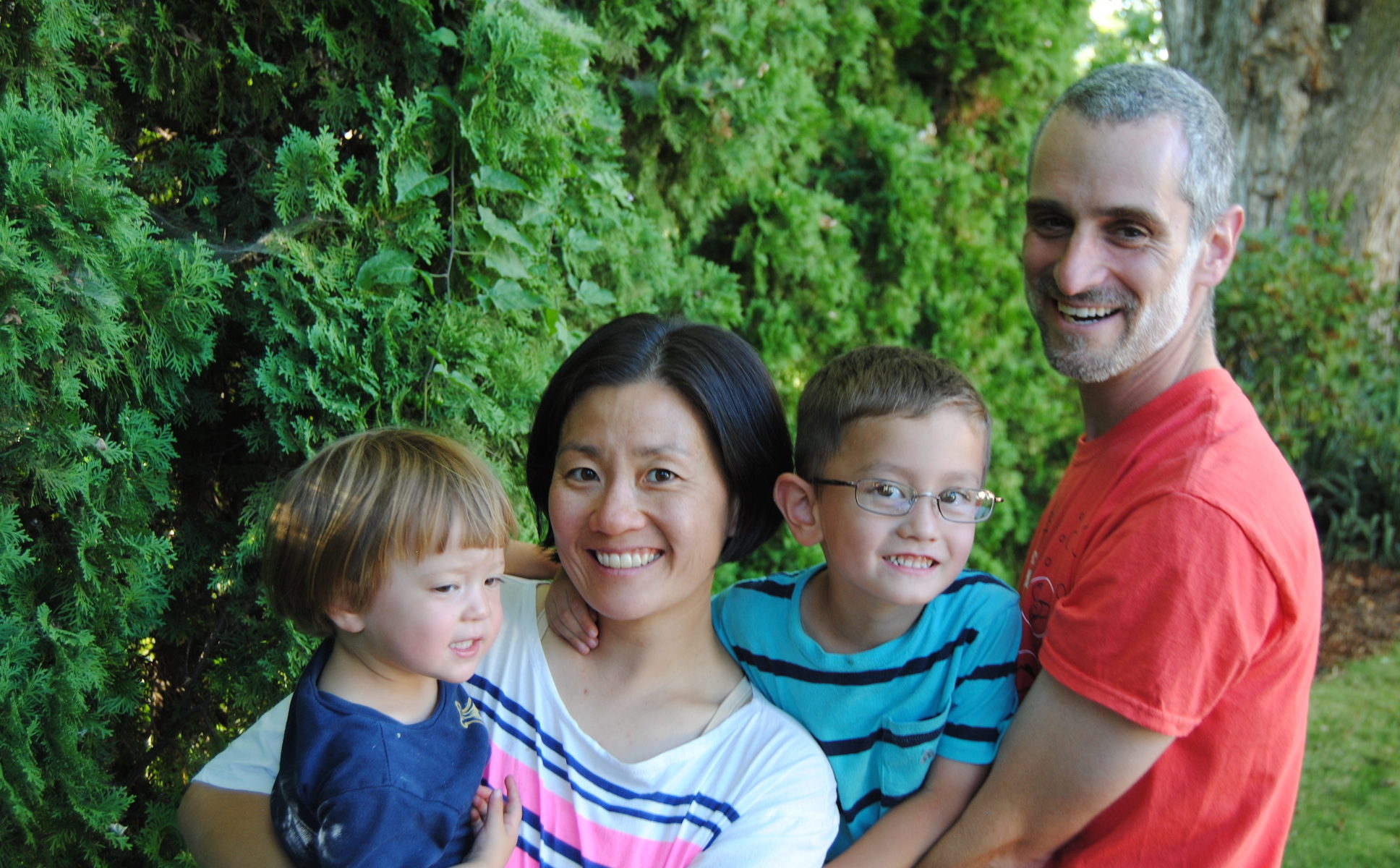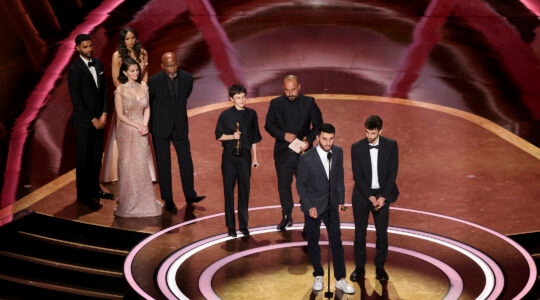Helen Kim and her husband, Noah Leavitt – Whitman College professors who met as grad students in the social sciences department at University of Chicago – are the leading, and virtually only, experts on Asian-Jewish intermarriage in the United States. The two — she’s Korean-American, he’s Jewish — recently spoke with JTA by phone from Walla Walla, Wash., where they live with their 6-year-old son Ari and 3-year-old daughter Talia. This interview has been condensed and edited.
You’ve published two studies on Asian-Jewish families: the first focusing on couples, the second on grown children of Asian-Jewish parents. What do you see as the most significant findings?
Kim: The most significant thing about both talking with the couples as well as the kids is that these families are definitely creating Jewish homes and raising their kids as Jews … The concern always raised with intermarriage is about Judaism disappearing. That’s definitely not happening for the couples and the adult kids that we’ve talked to.
But isn’t that because couples and individuals with stronger Jewish ties are more likely to volunteer for a study about Jewish-Asian families?
Leavitt: When we selected couples, we tried to select from as wide a diversity of feelings about Judaism as possible. We made some choices to look for people who may have had weak attachments. We weren’t looking for particular kinds of Judaism or levels of attachment to Judaism.
Any idea how many Jewish-Asian households there currently are in the United States, or what percentage of Jews who intermarry marry Asians?
Kim: We don’t. The U.S. Census is barred from collecting religious identification information, and among Jewish researchers, the collection of racial demographics is just beginning. In five years we might have that information, because the Cohen Center at Brandeis is starting to collect that.
To what extent do your findings reflect your own experiences as an Asian-Jewish couple?
Kim: There were definitely some similarities. One of the things our interviewees talked about was feeling like they didn’t really know how to transmit a sense of Asian ethnicity. Whereas the Jewish piece, regardless of what their attachment or experiences with Judaism were like in the past, they always talked about feeling like there was a synagogue or JCC or Hebrew school they could go to. Those issues certainly play out in terms of our family. I haven’t converted, but I’m totally on board [with giving the children a Jewish upbringing], like a lot of the people we interviewed. I know a lot about Judaism, it’s a cultural milieu I feel comfortable in, in part because I grew up with a lot of Jews. Doing the Jewish piece is perhaps easier because there is a Jewish community even in a place like Walla Walla. We have a Reform synagogue. We have Sunday school every month. We do a lot of Jewish practices in the home. Not so much for the Korean piece or the Asian piece. It’s harder, because often there isn’t the same type of community with a critical mass or organizational structure.
Was your marriage a source of conflict within your extended families?
Kim: No, and in terms of the couples that we interviewed, there was very little conflict. The way couples explained that [lack of conflict] was their perceived cultural similarities [such as a shared emphasis on family, education and achievement].
Leavitt: In addition, there was an absence of traditional stressors. We really didn’t have in the couples people who had a strong religious identity that was a significant alternative option or challenge to Judaism … When we interviewed adult kids, they reported very few instances where parents had conflicts over religion, they didn’t describe debates about which things the family should do.
In your recent study, you asked people who’d grown up with an Asian parent and a Jewish parent what advice they’d offer for Asian-Jewish couples with children. What did they say?
Leavitt: They over and over said that they would encourage parents to provide as much as possible of everything. They weren’t worried about the conflicting or contrasting strands of their background, and they said, “Make sure you’re giving kids as many options to understand what they’re about, because they’ll be more confident.” Sometimes there’s parental anxiety about confusing kids, but the people we interviewed said, “Give it all to us, because we can sort it out.”
Your latest study is called “Funny — You Don’t Look Jewish.” Did the people you interviewed hear this a lot?
Kim: A number of the kids look [racially and ethnically] ambiguous to a casual observer. A woman we interviewed talked about how people can always tell she is “somewhat Asian or something ethnic” and that they are always “shocked” when they find out she is Jewish, something that feels weird to her because she feels more strongly about her Jewish identity than her Asian identity … A lot of people felt their Jewish identity was called into question because they didn’t look like what people think Jews in this culture look like. The couples were very attentive to the racial presentation of their kids, especially when they had more than one kid and they presented differently and were treated differently based on that. One of the things that happened was the kids responded to not being guessed for who they are to developing a conscious cultural identity about being Jewish.
Your research is based on interviews with very small, self-selected samples – 22 people for the latest study, 37 couples for the earlier one. To what extent can we generalize from your findings, and if we can’t, what contribution do they make to the field?
Kim: No qualitative researcher would ever make the claim with such a small sample size that one could generalize the findings to the whole population. The beauty is getting a lot of the details and seeing patterns in enough individuals to say, “Well a lot of people tend to talk about X, Y and Z.” The vast majority of Jewish demographic studies looking at intermarriage are quantitative, but these in-depth, rich kinds of data – what do these marriages look like? – that kind of quantitative research has a harder time getting at.
JTA has documented Jewish history in real-time for over a century. Keep our journalism strong by joining us in supporting independent, award-winning reporting.






